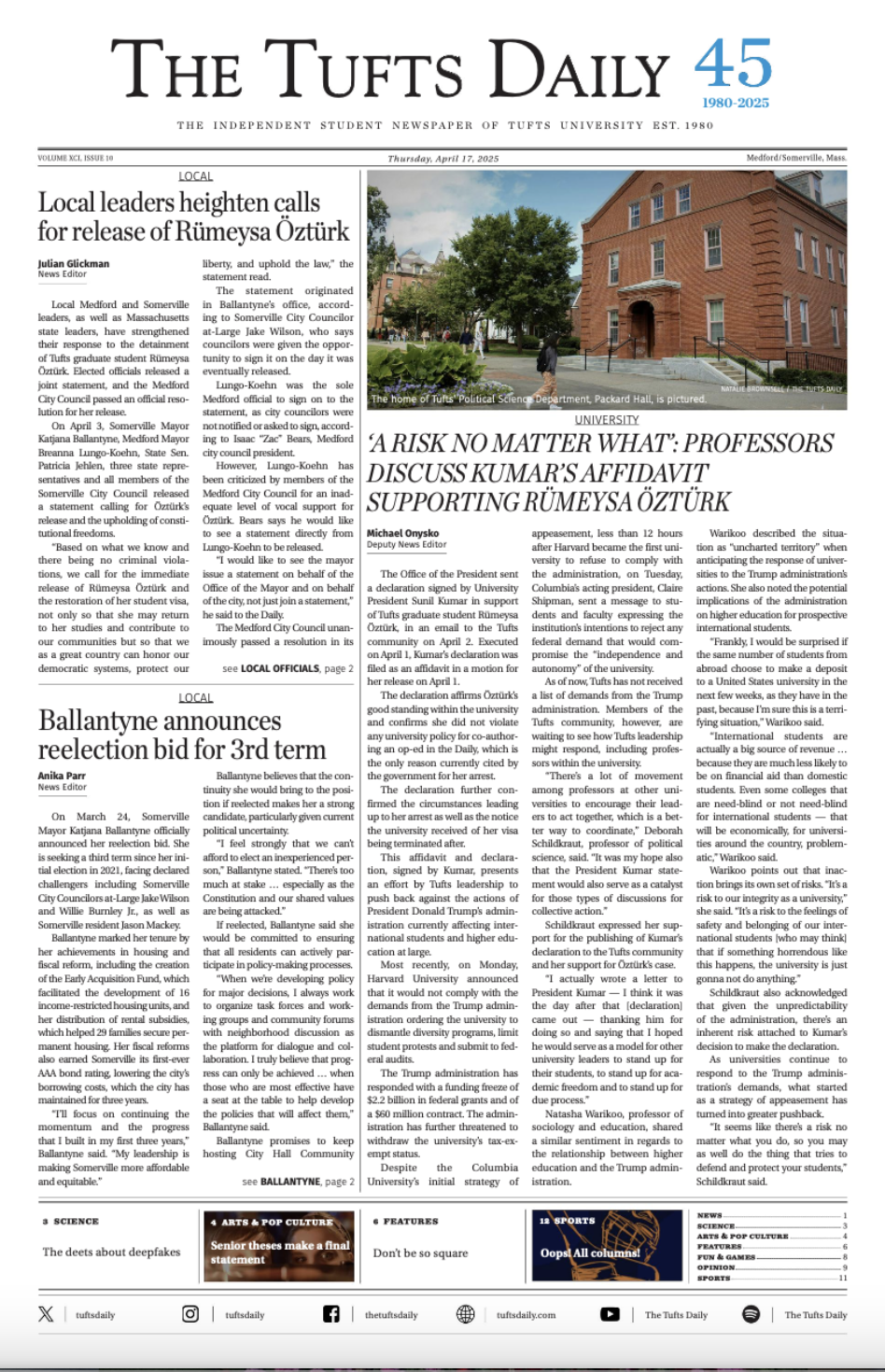At the end of eighth grade, my school decided to take us on a one-week overnight trip to Yosemite National Park. We learned about Yosemite’s ecosystems and history while hiking through forests and among thundering waterfalls. Almost a decade later, I remember this trip vividly, just as I remember every national park I’ve been to.
National parks are some of the most popular tourist destinations in America. In 2023, over 325 million people visited national parks. This figure — a significant increase compared to the 273 million visits in 2013 — should be celebrated. Being outdoors has important physical and mental health benefits, and research has shown that time spent in nature is associated with higher environmental awareness.
National parks also play an important role in protecting our environment, ecosystems and wildlife for future generations. Preserving biodiversity and ecosystems is one of the main goals of the National Park Service, which protects a wide range of habitats from prairies to mountains to forests and many endangered species, such as the Cape Sable seaside sparrow. Additionally, the NPS protects the environment by keeping park waters clean and protecting important forests from deforestation.
The environmental and recreational value provided by national parks and the NPS can also be quantified economically. In 2020, national park visitor spending contributed $28.6 billion to the economy and supported 234,000 jobs in fields such as hospitality, recreation and transportation during the start of the COVID-19 pandemic. In 2022, as the economy recovered from the pandemic, visitor spending exceeded $50 billion nationwide, supporting nearly 380,000 jobs. A study conducted by the Harvard Kennedy School, which used survey data to comprehensively estimate the total economic value of the NPS, valued national park lands at $62 billion and NPS programs at $30 billion.
However, despite the value that national parks provide to the American public, the NPS is struggling. While more people are visiting national parks, this increase in tourism tends to be concentrated in the most popular parks such as Yosemite and Yellowstone, leading to overcrowding. Overcrowding isn’t just a hassle; it can make national parks more dangerous by increasing congestion on roads and challenging trails. Furthermore, it hinders the NPS’s ability to protect ecosystems and wildlife. Finally, large crowds can simply make the overall experience of being in nature less enjoyable.
All these issues have led to more work for NPS employees, many of whom report feeling overworked and underpaid. Despite increased burdens on national parks and their staff, however, Congress has yet to provide the NPS with needed funding. In fact, funding was cut by $150 million in 2024, lowering the budget to a mere $3.325 billion, which is far below the economic value that national parks provide. Since the NPS is primarily funded by Congress, with supplemental funding through admission fees and private philanthropy, Congress’s refusal to adequately fund our park system creates a significant problem: It prevents the NPS from addressing staffing shortages or making progress on their growing maintenance backlogs such as repairs on campgrounds and roads. It also means the NPS has no money to invest in infrastructure that could help manage overcrowding.
The solution to overcrowding isn’t to stop going to national parks. Whether it’s the breathtaking tidewater glaciers in Kenai Fjords or the stunning rock formations in Arches, everyone should have the chance to experience the wonder and natural beauty of the American outdoors. However, in order to ensure that this experience is safe and enjoyable, Congress should increase the NPS’s funding so that it can continue its important work of protecting nature.






